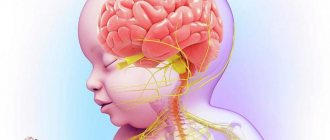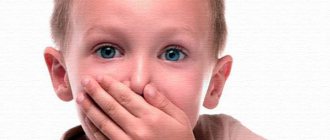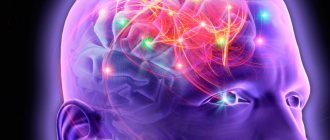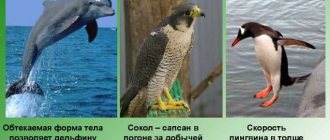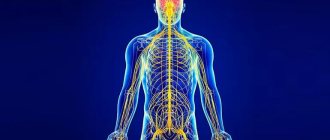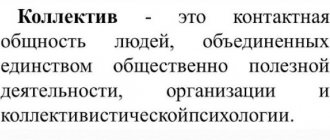Dysarthria is literally translated from Latin as “impairment of articulate speech.”
That is, there is incorrect pronunciation of words, which arises as a consequence of impaired innervation of the speech-motor apparatus. Erased dysarthria is a mild degree of the disorder. It manifests itself as mild speech defects, primarily in the phonetic and prosodic aspects of speech.
How it develops
Pathology occurs against the background of damage to the nerve fibers innervating the facial muscles. As a rule, in the erased form of the disease, the trigeminal, glossopharyngeal, hypoglossal and facial nerves are affected. This entails disruption of the components of the speech apparatus. The mobility of the lower jaw and lips is limited, the nasolabial fold is smoothed, and the activity of the soft palate, chewing and facial muscles is reduced. The amplitude of movement of the tongue, its retention of articulatory posture decreases, and its tremor develops.
In most cases, the disturbance of innervation is centralized. Based on this, several forms of erased dysarthria are diagnosed:
- cortical – formed when small pathological foci appear in the speech motor center. The phonetic, that is, pronunciation component of speech suffers;
- extrapyramidal - is formed when the subcortical nuclei and nerve ganglia are damaged and leads to a violation of speech prosody. That is, it loses its expressiveness;
- pseudobulbar - affects the pathways connecting the brain cortex with the nuclei of the cranial nerves. Causes a defect in both the phonetic and prosodic aspects of speech;
- mixed.
Erased dysarthria most often occurs in preschool children and is detected after 5 years. They cause a disorder in the pathology of perinatal, natal and postnatal development of the child. This includes pathological conditions during pregnancy: toxicosis and infectious diseases of the mother, intrauterine infections and fetal hypoxia.
Rapid or protracted labor, weak labor, cesarean section, Rh conflict, and birth trauma also influence the formation of pathology.
In the postnatal period, mainly in the 1st–2nd year of life, various diseases lead to the disorder: influenza, frequent acute respiratory viral infections, pneumonia, infectious processes and pathologies of the digestive tract, convulsive attacks against the background of hyperthermia, cerebral palsy, encephalopathy, hydrocephalic syndrome, perinatal damage to the central nervous system.
In adolescents, dysarthria in an erased form may be present starting from preschool age, or it may be acquired. Teenagers can acquire the disorder due to a brain injury or tumor, neuroinfections, or cerebrovascular accidents.
If dysarthria has developed in a child from an early age, then it is quite possible that he suffers from dysgraphia, that is, he is grammatically uneducated, and also has some problems with reading, perceiving and understanding speech. If the disease was acquired at an older age, then only a pronunciation defect is present. Written speech and understanding of what was said in relation to it is preserved.
Causes of pathology
Speech therapists and neurologists count many hidden and obvious reasons that contribute to the development of the disease. The mechanism of occurrence of the disorder is associated in 60% of cases with infectious damage to the brain during the perinatal or postpartum period. A hereditary factor cannot be ruled out if mom or dad suffered from this pathology in childhood.
Common factors that stimulate the development of dysarthria include:
- improper development of the placenta;
- toxicosis during pregnancy;
- infectious brain lesions in a newborn;
- rapid or prolonged labor;
- previous viral disease during pregnancy;
- Rh factor incompatibility.
Phonetic part of speech
With erased dysarthria, first of all, the pronunciation of sounds suffers, which is why the speech of such people is not entirely understandable for perception. However, there are forms of the disease in which speech defects are very modest and at first glance do not differ.
With this pathology, there is confusion, distortion, replacement or omission of individual sounds. First of all, those who require intervention from the tip of the tongue in their pronunciation suffer. The most significant sign, diagnosed in 80% of cases, is distortion of the pronunciation of the sound [r], in 65% of cases the sound [l] suffers. They are replaced by the child with sounds [th] or [g] that are easier to pronounce.
Interdental pronunciation of hissing and whistling sounds, for example, [zh], [sh], [z], [s], and deafening of voiced sounds are also common.
The interesting thing is that if these sounds are pronounced by a person in isolation, then no difficulties arise. But as soon as you include them in your speech, control is lost and their pronunciation is distorted. That is, it is difficult for such people to set them to automatic playback.
It has been established that most children with an erased form of dysarthria do not use many standard words in everyday life, confuse words that are similar in pronunciation, and when several consonants are combined in a word, they omit them.
The speech of dysarthric patients with a mild degree of disorder is blurred and not entirely intelligible.
Prognosis and prevention
Dysarthria does not threaten the child’s physical health. However, if a child's speech problems are ignored, they can cause psychological and social difficulties in the future. Correct diagnosis and diligent implementation of doctors' recommendations are necessary.
With regular and thorough exercises, as well as the inclusion of all necessary types of rehabilitation, the symptoms of erased dysarthria can be dealt with and in the future speech disorders will completely disappear.
Rate this page!
Add a comment Cancel reply
Prosodic part of speech
In children and adolescents with mild dysarthric status, the prosodic side of speech also suffers. It characterizes melody, tempo and timbre, duration of pronunciation and determines the intelligibility and intelligibility of the speech pattern.
First of all, there is a lack of voice intonation. Children cannot read poetry expressively or change intonation aspects. They are unable to convey emotion intonationally, and their vocal range loses its breadth. Pauses between phrases are lost. There is a nasal tone to the voice. Narrative statements especially suffer. In general, speech becomes monotonous and inexpressive.
Due to the fact that with erased dysarthria, speech breathing slows down, exhalation is impaired, dysarthric people speak while inhaling. That's why they talk, as they say, excitedly.
The timbre of the voice directly depends on the emotional status. If the psychological status is dominated by inhibition processes
, then the voice becomes quiet, muffled, and acquires a hoarse or hoarse tone. Excitable dysarthrics have a ringing voice that turns into a scream.
The tempo of speech can also vary: for some it is accelerated, in which case the vowels fall out of the words, while for others it is slow, in which case the vowels, on the contrary, are overextended.
Speech also suffers rhythmically. It loses its emphasis, the emphasis in words is placed incorrectly. This affects the pronunciation, making it unusual and partially incomprehensible.
Classification
Patients with erased dysarthria are divided into three groups according to the degree of speech development impairment:
- Communication ability is developed, but there are problems with the perception and use of prepositions and complex verbs. Speech communication is good, the vocabulary is sufficient for the child’s age. It is difficult to pronounce words that are difficult to articulate. Spatial orientation may be difficult.
- In addition to impaired pronunciation of sounds and undeveloped intonation ability, there is a change in phonemic perception. Mistakes are made in pronouncing similar phonemes and words. Vocabulary is insufficient for the age group. It is difficult to form words and coordinate parts of speech when constructing a sentence.
- Severe speech and phonemic impairment is noted. Vocabulary is low. Problems arise when constructing syllables. Grammatical rules are not followed.
This conditional classification is necessary to separate children in preschool and school institutions for therapy.
Other deviations
Disruption of the innervation of individual muscle groups not only upsets our usual speech patterns. The general appearance of the patient is also noteworthy. Noteworthy is the lack of facial expressions. The nasolabial fold and the corners of the mouth are asymmetrical. During speech activity, hypersalivation is a concern, since the ability to swallow saliva is impaired.
With paresis of the facial muscles, they lose tone. The lips and corners of the mouth are lowered, the tongue is inactive, and does not fully participate in word formation. Such features affect the intonation and expressiveness of the tale. Due to the weakness of the masticatory muscles, the lower jaw is not held in an elevated position, which is why the ability to keep the mouth closed is lost. Muscle weakness increases with articulatory load.
With a spasm of the facial muscles, there is no facial expression, the muscles are hard to the touch and tense. The lips seem to be constantly smiling due to a spasm of the upper lip. They practically do not participate in word formation. It is impossible to fold them into a tube or pull them forward.
Articulation suffers, the transition from one articulatory pose to another is disrupted. Autonomic disorders include sweating, cyanosis of the hands and feet.
Dysarthric people are able to perform almost all articulation tests: smile, puff out their cheeks, etc. However, their quality of execution noticeably suffers and is characterized by vagueness, blurriness, insufficient amplitude, and lethargy.
Such children are easily excitable, overly fussy, or, conversely, inhibited. Performance decreases, attention and memory suffer.
Difficulties arise in fine motor skills of the hands, as well as in general motor skills. During physical activity, children quickly get tired, it is difficult for them to maintain the rhythm and tempo of movements, or switch from one type to another.
Erased dysarthria in adults
For adults, the pathology is uncharacteristic, but still occurs. Erased dysarthria is diagnosed when:
- tumors in the central areas of the brain;
- deterioration of blood circulation in brain tissues;
- demyelinating disease of the central nervous system;
- stroke;
- syphilis affecting brain tissue;
- traumatic brain injury;
- abscess in the cerebellum;
- poisoning with severe toxins;
- parkinsonism;
- multiple sclerosis;
- severe infectious damage to the body;
- cerebral hemorrhage;
- severe nervous pathologies;
- autoimmune diseases that affect nerve and muscle tissue;
- vascular pathologies;
- spinal muscular atrophy;
- oligophrenia.
In adulthood, the pathogenesis of dysarthria is caused by prolonged unconsciousness due to a disease that has affected the body or a traumatic brain injury.
Sometimes the pathology is caused by poorly performed surgical intervention on the brain. Mild dysarthria can be experienced by people who abuse alcohol, do not follow the dosage and course of taking certain medications, or take drugs. In the risk group, not counting infants, are teenagers and the elderly. In middle-aged people, the disease is almost never diagnosed.
Dysarthria has an acquired etiology and is not inherited. Only certain brain diseases that cause speech impairment can be transmitted.
Exercises for erased dysarthria
It is recommended to do breathing exercises developed by teacher A. N. Strelnikova: inhale sharply when bending over, exhale when straightening the body.
Speech therapists offer various corrective exercises for the muscles of the lips, cheeks, tongue, and jaws, which after consultation can be done independently. Some simple exercises include:
- alternate and simultaneous puffing of the cheeks;
- retraction of the cheeks between the jaws;
- sucking sugar or candy behind the cheek;
- vibrating movements of the lips;
- opening and closing the mouth with clicking teeth;
- removing gauze or paper clamped in teeth;
- licking lips.
Tongue twisters and rhymes have a good effect in developing sound pronunciation.

